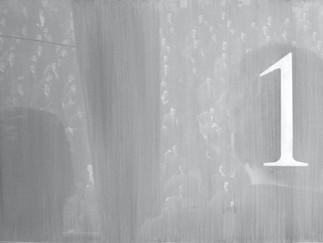Corners of the Art World: Morocco
- calypso186
- Jun 11, 2024
- 7 min read
Updated: Nov 19, 2024
Our curators invite you on a tour through the vibrant heart of Morocco's contemporary art scene.

Amid a surge of projects across Morocco, David Knowles, our Founder and Creative Director, travelled to Marrakesh and Tangier to check out the local art scene, collaborating along the way with emerging and blue-chip talents. From organising studio visits to attending key art events like the 1-54 Contemporary Art Fair, Artelier scouted out the most trailblazing, sophisticated artists of the contemporary Moroccan generation to present to you in this feature. Check 6 of them out below.
Click on an artist to jump to their section
David's research trip to Morocco
Hassan Hajjaj
Marrakesh is a feast for the senses: the new and the old, the food and the smells, the colour, the music, the intimate lighting. This extravaganza of senses continues to mesmerise at Riad Yima: the studio-gallery of photography sensation, Hassan Hajjaj. Clad in zellige tiles and tangerine-orange walls, the space mirrors the city’s blend of old and new, showcasing garments, furniture, and artworks, all designed by Hajjaj himself, in his unmistakable maximalist style.
Raised in both London and Morocco, Hajjaj masterfully blends London’s iconic street style with the rich tapestry of Moroccan heritage. In the ever-evolving cityscape of Marrakesh—where traditional roots mingle with modern influences since Morocco’s independence in 1956—Hajjaj breaks free from colonial clichés and the tourist gaze. Instead, his vibrant creations weave together diverse influences, shattering expectations with their kaleidoscopic brilliance.
Take Kesh Angels, for instance: Hajjaj flips the script on Western stereotypes of Islamic women, portraying them as rockstar-cool figures with bold, forward-facing stares—playful, defiant, and riding motorcycles. The shiny motorbike rims and traditional attire create a striking contrast, captured from dramatic, cinematic angles. All in all, Hajjaj’s work is a vivid reimagining of cultural identity, blending tradition with contemporary flair in an electrifying, utterly unique way.

'Miriam', 2010 'Kick Start', 2006
Safaa Erruas
Safaa Erruas whispers profoundly through her sculptural masterpieces, steeped in deep conceptual richness. Born amidst Tetouan's iconic 'White Dove' architecture, Erruas initially pursued science before graduating from the Beaux-arts de Tétouan in 1998. Today, she is closely associated with 50 Golborne Gallery, a vibrant hotspot championing African artists and the diaspora.
Erruas' affinity for white may reflect her upbringing in Tetouan, where the city's whitewashed facades symbolise both purity and universality. This distinctive choice in her artistic practice Erruas strikes a compelling balance between the boldly provocative and the softly meditative. Her minimalist, delicate creations frequently draw inspiration from Moroccan dressmaking — everyday materials like cotton, tissue paper, pins, and razors transcend their practical roots, morphing into fantastically asburd artworks.
And so, Erruas' work plunges you into wonderland: nothing is quite as we know it, but nothing is wrong either. High heels embroidered with steel become unwearable; pillows are huddled together on a wall, confronting, strange, devoid of their usual comfort; ethereal gauze staircases made from 10,000 natural silk cocoons lead to nowhere but simply a gallery wall: revealing a voidless nothing which at once suggests new life and creation. Ultimately, each piece captures that magical Deleuzian ‘becoming’— a fluid state teeming with potential for new worlds and ideas.
Safaa Erruas, 'Talon Aigu | High Heel', 2006


Safaa Erruas, 'Inaccessible', 2014

Amina Agueznay
Immersed in a creatively charged environment from the get-go — Amina Agueznay's mother, Malika, was a trailblazer in modernist abstract art in Morocco — and now her daughter continues her legacy as one of Morocco's most prolific artists. Represented by the prestigious Loft Art Gallery, Agueznay blends heritage and contemporary flair like no other.
Starting with a background in architecture and jewellery-making, Agueznay’s path led her to the often overlooked yet highly skilled artisans of the Atlas Mountains. These masters of weaving, woodworking, and silversmithing bring generations of ancestral knowledge to their craft.
In one such collaboration, Agueznay received an invitation from architect and anthropologist Salima Naji to a ksar village in southern Morocco. Here, she collaborated with local women weavers, or maalmates, fusing traditional techniques with her unique artistic vision. They transformed architectural designs from ancient doors into totemic-like artworks, beautifully embroidered with palm husk (talefdamt). This ancient craft harkens back to a time when communities stripped palms to their bare threads to create baskets, clothing, and utensils. The aroma of palm that emanates from these pieces evokes the serene oasis, a sensory bridge to a world where nature meets artistry.
There’s a profound beauty in distilling nature down to its essentials and reshaping it with human creativity. Agueznay’s work epitomises this ethos, demonstrating that even the simplest elements of nature are designs waiting to be rediscovered and reimagined. Her series serves as a portal into Moroccan creativity, seamlessly merging the natural, the traditional, and the modern. In a world dominated by fast-paced, global consumerism, her work stands out as a sparkling testament to the value of local talent and the timeless allure of nature.

'Portal 1', 2023 | 'Portal 4 Variation 2/4', 2022
Mounir Fatmi
Meet mounir fatmi—Tangier-born in 1970, he now splits his time between Paris, Lille, and Tangier. This prolific artist defies convention at every turn, even eschewing capitalisation of his name as a subtle pushback against linguistic power structures. His provocative art has graced five major biennials, from Dak'Art (2012) to the Venice Biennale (2017), and found its way into top-tier venues like the Centre Pompidou, Palais de Tokyo, and Museo Reina Sofía.
Fatmi's art is a masterclass in reimagining: architectural motifs and outdated communication tech are transformed into thought-provoking pieces that challenge our perceptions. His work is a playground of subversion, urging us to question contemporary issues ranging from technology and stereotypes to injustices buried deep within history.
Fatmi uses outdated materials to critique the technological and ideological systems that frame our lives. His creations resemble experimental archaeology, excavating the remnants of tech history and exploring the magnetic pull of imagery.. Take The Machinery (2009), for instance. Here, thirty sleek industrial saw blades initially project menace but, upon closer inspection, reveal elaborately inscribed Islamic poems delivering messages of peace. The result is an exquisite blend of beauty and danger, inviting a nuanced re-evaluation. In today’s landscape of deepfakes and AI, where the lines between reality and illusion blur and injustices embedded in society are at a turning point, fatmi’s work is strikingly pertinent.






Omar Mahfoudi
Growing up just outside Detroit, Omar Mahfoudi found his artistic roots within his family and through personal experimentation. By age 12, his talent was further shaped at a Catholic school in Tangier, where he studied art history and plastic arts. Initially drawn to material-heavy compositions, Mahfoudi later embraced the fluidity of liquid acrylics and inks, creating works that elegantly blur the line between figuration and abstraction.
Morocco's Atlas Mountains, casting long shadows over cities like Marrakesh and mingling with the scent of roses from the Valley of Roses, serve as a vivid backdrop for Mahfoudi's work. This interplay of shadow and fragrance, light and scent, resonates deeply in his art.
In his youth, Mahfoudi resisted carrying flowers, viewing it as a challenge to his masculinity. Yet, in his series Les Fleuristes De L'Atlas, he celebrates 12 florist men from the Atlas Mountains, who contribute to Morocco's flourishing trade in perfume roses—3,200 tons annually, no less! Mahfoudi transforms these everyday interactions into hazy, nostalgic scenes, lifting the mundane into a dreamy realm.
His canvases capture moments where men are enveloped by nature, each piece a blend of sweeping colours and fluid forms, just as our experiences flow together in life. Mahfoudi’s art transforms the ordinary into something extraordinary, where everyday moments are romanticised from the tangible to the dreamlike. His work invites us to linger in these moments, appreciating the transient beauty of life as it melds into the canvas, reflecting the vibrant hues of the Moroccan landscape.
'Les Fleuristes de l'Atlas 11', 2021 | 'Les Fleuristes De l'Atlas 3', 2022
© Image Courtesy of AFIKARIS gallery
'Les Fleuristes de l'Atlas 7', 2021 | 'Les Fleuristes De l'Atlas 1', 2021
© Image Courtesy of AFIKARIS gallery

Mohamed El Baz
Born in Ksiba, Morocco, in 1967, Mohamed El Baz was a luminous figure in contemporary art. His creative journey traversed notable institutions such as the Régionale d'Art de Dunkerque, the Nationale Supérieure d'Arts de Paris-Cergy, and the Institut des Hautes Etudes en Arts Plastiques. Though his life ended prematurely in May 2024, his inventive spirit continues to shine brightly in both Moroccan and global art circles.
El Baz's work is an enchanting fusion of the everyday and the extraordinary. Imagine soap bars alongside stars, a visual duet where the mundane meets the celestial. This interplay is central to his installations, photomontages, performances, and sculptures, transforming common objects into poetic expressions. His art beckons us to find the sublime in simplicity, merging the ordinary with the cosmic and creating a realm where the trivial and the transcendent converse.
Inspired by philosopher Emil Cioran’s idea of "Tinkering with the incurable," El Baz's creations delve into the human condition and the inexorable passage of time. He doesn’t seek to mend or resolve the universal truth - that is, the passing of time - but invites us to pause in a contemplative “in-between” space, considering impermanence as part of the beauty of existence. El Baz’s legacy is a powerful testament to finding beauty in the ephemeral—a reminder that the most profound artistic moments often lie where the ordinary meets the extraordinary, within the delicate balance of creation and decay: as a universal, unchanging truth.

'Leproces 1-9', 2019
© Image Courtesy of the artist and L’Atelier 21, Casablanca, Morocco


Conclusion
Morocco’s contemporary art scene is as unpredictable as it is original, a melting pot where artists remain steadfastly committed to their unique paths. The diversity of their expressions—from Hassan Hajjaj’s subversive, slick photography to Safaa Erruas’ quiet minimalism, and from Amina Agueznay's embrace of traditional crafts to mounir fatmi’s provocative reimaginings—highlights their dedication and distinct artistic identities.
In their individual practices, these artists navigate and redefine the boundaries between the past and the present, the local and the global. Their work is a testament to the dynamic interplay of cultural identity and contemporary art, offering fresh perspectives on how tradition can be both a foundation and a springboard for innovation. They remind us that art is not just a reflection of the world but a tool for reimagining it, continually shaping and reshaping our understanding of culture and existence.
The Moroccan scene leaves us with a rich legacy of creativity and introspection as we anticipate the next exploration of global contemporary art. We invite you to keep your eyes peeled for the next edition. We’ll be hopping from one corner of the world to the next, uncovering the myriad ways artists around the world are redefining our understanding of art and culture. Watch this space!

Curator, Art Research & Editorial
Calypso is a published academic, with a First-Class Honours BA in History of Art from the University of Bristol. With a truly international outlook, she writes at every opportunity on rich artistic perspectives evident across the world, from Europe to Africa and the Middle East.















































